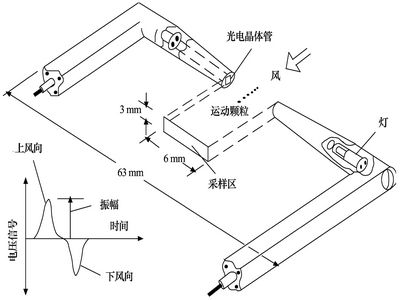Measuring the Velocity of Particles in an Aeolian Saltation Cloud:A comparison of several commonly used methods
Updatetime:2010-12-24From:
【Enlarge】【Reduce】
The velocity of saltating particles is an important parameter in aeolian physics and represents a special case of a two-phase (gas particle) flow. Several techniques have been applied to measure the velocity of the blowing particles. In this paper, we review several commonly used measurement methods: photoelectric cells, high-speed photography, Particle Dynamics Analyzers (PDA), and Particle Image Velocimetry (PIV). The photoelectric cells, high-speed photography, and PDA methods are useful in studying the velocity distribution of particles. In contrast, PIV is a whole-flow-field technique that permits studies of the average velocity field within a target area. The methods provided similar results in some cases, but considerable differences also existed. They provide similar conclusions about the overall velocity distributions at a specific height, but direct measurements of the velocity distribution close to the surface are scarce, except for some PDA results. The magnitude of the measured mean particle velocity also differed greatly among the methods, as did the relationship between mean particle velocity and wind velocity, particle size, and possibly other influencing factors. Although several authors have proposed similar power functions to describe the variation in mean particle velocity with height, the results predicted by these models differed widely. Each technique is based on unique principles, and has related advantages and disadvantages. To make full use of the different techniques, more work must be done to validate the methods and develop a reliable technique for measuring the velocity of blowing particles.
|
Diagram of a typical particle photoelectric cell velocimeter (Picture/Journal of Desert Research) |
Appendix





